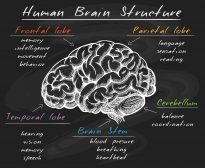Definition
noun
An evolutionary process by which two or more separate species in the same environment develop similar adaptation or characteristic for survival
Supplement
Parallel evolution refers to the evolutionary process wherein two or more species in the same environment develop similar adaptation or characteristics. Example of parallel evolution: North American cactus and the African euphorbia that developed similar adaptation, which is their thick stems and sharp quills to survive the hot, arid climates. These two plant species are of different plant families but live in the same type of environment. Another example is the evolution of adaptive features between two groups of organisms living in similar habitats such as marsupial mammals in Australia and placental mammals on another continent.1
Parallel evolution is similar to convergent evolution in a way that two unrelated species evolved similar traits. However, in parallel evolution, the two species evolved same traits while living in the same type of environment whereas in convergent evolution the two species evolved same traits in different types of environment. Divergent evolution is different from the two. In divergent evolution, an interbreeding population or species diverges into two or more descendant species, resulting in once similar or related species to become more and more dissimilar.
Compare:
See also:
Reference(s):
1 Parallel evolution. Dictionary.com Unabridged. Retrieved from ://www.dictionary.com/browse/parallel-evolution?s=t.


